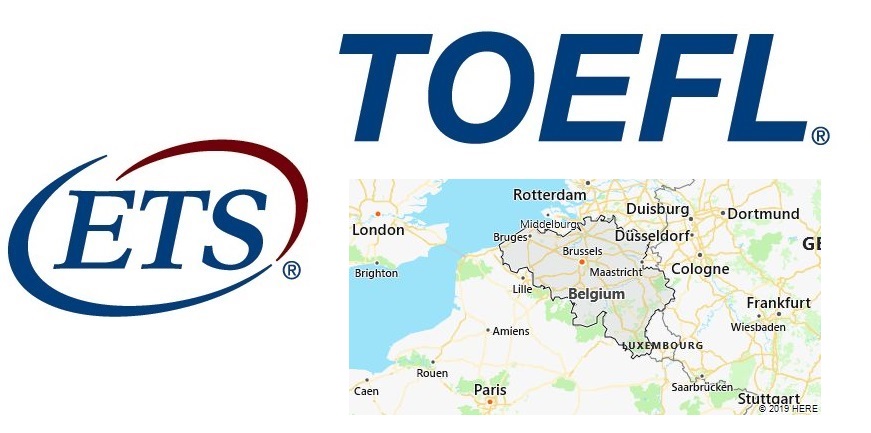The TOEFL iBT test is offered in this location.
The list below shows testing regions, fees and dates as of February 15, 2019, but availability may change when you register. Fees are shown in US$ and are subject to change without notice.
| Region | Testing Format | Fee | Test Dates |
|---|---|---|---|
| Brussels Capital Region | TOEFL iBT | $255 $255 $255 $255 $255 $255 $255 $255 $255 $255 $255 $255 $255 $255 $255 $255 $255 |
Fri., Mar 08, 2019 Sat., Mar 09, 2019 Sat., Mar 16, 2019 Sat., Mar 30, 2019 Fri., Apr 05, 2019 Sat., Apr 13, 2019 Sat., May 04, 2019 Fri., May 10, 2019 Sat., May 11, 2019 Sat., May 18, 2019 Sat., Jun 01, 2019 Fri., Jun 14, 2019 Sat., Jun 15, 2019 Sat., Jun 29, 2019 Fri., Jul 12, 2019 Sat., Jul 13, 2019 Sat., Jul 27, 2019 |
Belgium Overview
Belgium, kingdom in Western Europe, a federal state since 1993, which consists of the regions Flanders (Dutch language area), Wallonia (French and German language area) and Brussels (bilingual French and Dutch), divided into ten provinces and the capital region. Belgium is one of the most densely populated countries in Europe (376 residents per km 2). The country is divided into Lower Belgium (the Flemish coast with the former world port of Bruges; in the northeast part of the Kempenland), in the Central Belgian plateau and hill country (drained by the Scheldt and its also navigable tributaries, with many canals) and in High Belgium with the Ardennes and the High Fens. In the economy, industry (particularly coal mining and highly developed heavy industry) takes precedence over agriculture and livestock.
History: The name Belgium goes back to the name of the Roman province Gallia Belgica, which was used by the Celtic, z. T. also Germanic Belgen was inhabited. In the 5th century part of the Frankish Empire, in the 14th century the area came to the Duchy of Burgundy and with this in 1477 to the Habsburgs; from 1556 the southern Netherlands, today’s Belgium, were under the Spanish crown. In 1815 the Catholic southern and Protestant northern Netherlands were combined to form the Kingdom of the United Netherlands. After an uprising by the southern Dutch, the Kingdom of Belgium was established in 1830.
Since 1840 there have been disputes between the French-speaking Walloons and the Flemings, who are part of the Dutch cultural area, over the language issue. In the 19th century, Belgium became an important industrial country due to its rich deposits of hard coal. In both world wars the country was occupied by German troops. Belgium has been in a customs union since 1948 and an economic union with the Netherlands and Luxembourg since 1960 (Benelux). King was Albert II (* 1934) from 1993 to 2013. He abdicated in 2013 in favor of his son Philippe (* 1960).
Country facts
- Official name: Kingdom of Belgium
- Vehicle registration number: B
- ISO-3166: BE, BEL (56)
- Internet domain:.be
- Currency: 1 euro (€) = 100 cents
- Area: 30,530 km²
- Population (2018): 11.4 million
- Capital: Brussels
- Official language (s): French, Dutch, German
- Form of government: Parliamentary monarchy
- Seat of government: Brussels
- Administrative division: 3 regions with a total of 10 provinces
- Head of State: King Philippe
- Religion (s): Christians (Catholics)
- Time zone: Central European Time
- National holiday: July 21st
Location and infrastructure
- Location (geographical): Western Europe
- Position (coordinates): between 49 ° 30 ‘and 51 ° 30’ north latitude and 2 ° 32 ‘and 6 ° 24’ east longitude
- Climate: temperate maritime climate
- Highest mountain: Botrange (694 m)
- Road network (2015): 118 414 km (paved)
- Railway network (2014): 3592 km
Population
- Annual population growth: 0.5%
- Birth rate: 1.1%
- Death rate: 1.0%
- Average age: 41.5 years
- Average life expectancy: 81.4 years (women 83.7; men 79.0)
- Age structure: 17.2% younger than 15 years, 18.8% older than 65 years
- Literacy rate (15 year olds and older): k. A.
- Mobile phone contracts (pre-paid and post-paid): 104.7 per 100 residents (2017)
- Internet users: 87.7 per 100 residents (2017)
Economy
- GDP per capita: US $ 43,323 (2017)
- Total GDP: $ 437.2 billion (2017)
- GNI per capita: US $ 41,790 (2017)
- Education expenditure: 6.6% of GDP (2014)
- Military expenditure: 0.9% of GDP (2018)
- Unemployment rate (15 years and older): 7.1% (2017)
Climate
The climate is oceanic with mild winters and cool summers; temperate in Lower Belgium with annual temperatures of 10 ° C and annual rainfall of 600–800 mm. In the Ardennes, the annual mean temperature falls to 6–7 ° C, and rainfall rises to 1,100–1,400 mm.
Vegetation
While one can still assume pure deciduous forests in the entire area of Belgium for the Middle Ages, today conifers predominate in several regions. The spruce, which is often found in the Ardennes, was introduced by forestry, as was the pine in the Kempen, which was planted in formerly extensive heathland areas. The preserved old beech forests of the Forêt de Soignes southeast of Brussels have been a UNESCO World Heritage Site since 2017. In the High Fens, raised bogs occur on impermeable clay soils. This highest part of the Ardennes is part of the German-Belgian Nature Park.

